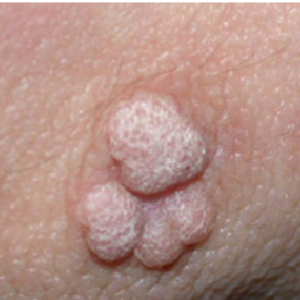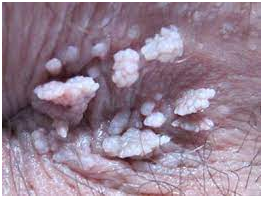warts Treatment
Warts Treatment at Shiraz Cosmetic and Skin Clinic
At Shiraz Cosmetic and Skin Clinic , we specialise in effective treatments for warts, which are common skin growths caused by the human papillomavirus (HPV). Moreover, our experienced team provides various methods to remove warts safely and efficiently, ensuring optimal results for our patients. For more information on HPV and warts, visit the Centers for Disease Control and Prevention (CDC) .
A viral wart is a very common benign lesion that results from infection with HPV. Warts appear as small, rough lumps or growths on the skin. When located on the feet, they are known as verrucas.
Warts are widespread and usually harmless. They can be rounded or flat, appearing as a single wart or in clusters. Some warts may itch or cause pain and can develop on different parts of the body due to strains of HPV.
What are the different types of warts?
What Are the Different Types of Warts?
There are different types of warts that look distinct and appear on various parts of the body. Common types of warts include:
- Common Warts : These typically develop on the backs of fingers or toes, around nails, and on knees. Moreover, they sometimes resemble tiny cauliflowers.
- Verrucas or Plantar Warts : These occur on the soles of the feet. Additionally, they grow into the foot and can cause significant pain when standing or walking. Learn more about plantar warts from the American Academy of Dermatology .
- Plane Warts : These have a flat surface and often grow in clusters, typically appearing in a line. You can commonly find them on the face, hands, and shins.
- Filiform Warts : These develop on a long stalk, resembling a finger or thread, and commonly appear on the face.
Furthermore, understanding the type of wart you have is crucial for determining the most effective treatment plan.
What causes warts?
Different strains of the human papillomavirus (HPV) cause warts. The strains of HPV that cause harmless warts on the hands, legs, or feet differ from those that cause genital warts and cervical cancer. For more details on HPV strains, check out this resource from the World Health Organization (WHO) .
The HPV virus infects the top layer of the skin and causes skin cells to grow rapidly. Sometimes just one or two warts develop on the skin. On the other hand, they may also grow in clusters in the same area.
Moreover, certain factors like weakened immunity or direct contact with infected surfaces increase the likelihood of developing warts.
How are warts diagnosed?
Warts can be diagnosed by just looking at your skin and feeling it. Tests are not usually needed. Occasionally a sample of your skin may be taken for testing if your doctor your doctor is concerned about another cause for your symptoms.

How are warts treated?
Warts are usually harmless and often go away without treatment; however, this process may take months or even years. For instance, in children, half of the warts disappear without treatment within 6 months, and 90% (9 in 10) are gone within 2 years. If your warts don’t cause any problems, you don’t need to treat them.
Some common treatments for warts include:
- Topical Paints or Gels : These treatments involve wart paints, pastes, or patches that contain salicylic acid, podophyllin, or similar compounds. They effectively remove surface skin cells. For more information on topical treatments, visit MedlinePlus .
- Cryotherapy or Freezing Treatment : This method uses liquid nitrogen sprayed or applied to the wart. As a result, the very cold liquid nitrogen freezes and destroys the wart. Practitioners usually perform this treatment every 2–3 weeks, and about 70% (7 out of every 10) of warts improve after 3–4 months of regular freezing.
- Electrosurgery : This technique, which includes curettage and cautery, proves effective for large and resistant warts. Under local anaesthetic, the practitioner pares away the growth and burns the base.
- Laser Vaporisation Treatment : Specialists perform this option when other treatments fail. Learn more about laser treatments from the Mayo Clinic .
Additionally, the choice of treatment depends on the type, location, and severity of the wart.
How can I prevent warts?
Maintain Good Hygiene: Keep your skin clean and dry, especially in areas prone to warts.
Avoid Sharing Personal Items: Do not share towels, razors, or other personal items that may come into contact with the skin.
Wear Footwear in Communal Areas: Use flip-flops or sandals in public showers, swimming pools, and locker rooms to reduce the risk of infection.
Keep Skin Healthy: Moisturize your skin regularly and treat any cuts or abrasions promptly to prevent HPV entry.
Avoid Picking at Warts: If you have warts, avoid touching or picking at them to prevent spreading the virus to other areas of your skin.
Boost Your Immune System: A healthy diet, regular exercise, and adequate sleep can help strengthen your immune system, making it less likely for warts to develop.
By following these preventive measures, you can reduce your risk of developing warts
What treatments are available
The primary treatment involves rapidly destroying the warts using cryosurgery. Furthermore, warts inside the anal canal usually respond well to cryosurgery.
Will a Single Treatment Cure the Problem?
Unfortunately, not in most cases. Even with cryosurgery and surgical treatments that immediately eliminate existing warts, many patients still develop new warts afterward. This happens because the viruses that cause warts can hide under the skin’s surface, allowing it to look normal for up to six months or longer before another wart appears.
Consequently, as new warts form, practitioners treat them in the dermatologist’s office using cryosurgery, especially as they become smaller and less numerous. However, sometimes new warts develop so quickly that office treatment would be uncomfortable if all were removed at once. In such cases, a second and occasionally a third outpatient surgical visit may be necessary.
Is Treatment Usually Continued?
In general, follow-up visits are essential for several months after the last wart appears to ensure that no more warts develop from viruses residing in the skin cells.
While warts often go away without treatment, we offer options if they cause pain, spread, or affect your appearance.

Contact Us
Address: Suite 12 / 6 MacIntosh Street
Chatswood 2067 NSW
Tel: 02 72523696
Email: admin@resultdrivenseo.com
How to book a consultation
To enquire about an appointment in Sydney, or for more information you can call us on 02 72523696, send us an email or fill out our online form.

Why choose us for your warts treatment in Chatswood?
Choosing Shiraz Cosmetic and Medical Clinic for your warts treatment in Chatswood ensures you receive care from a highly skilled and dedicated team. Our practitioners are committed to continuous professional development and regularly attend cosmetic medical conferences, staying updated with the latest advancements and techniques in the field.
This commitment to excellence guarantees that you receive the most effective and safe treatments, tailored to meet your individual aesthetic goals in a professional and welcoming environment.

